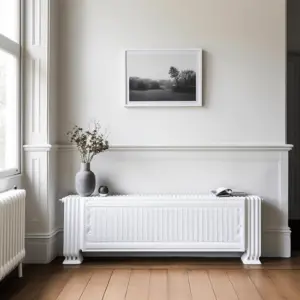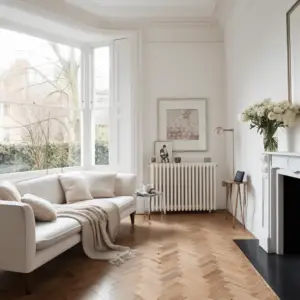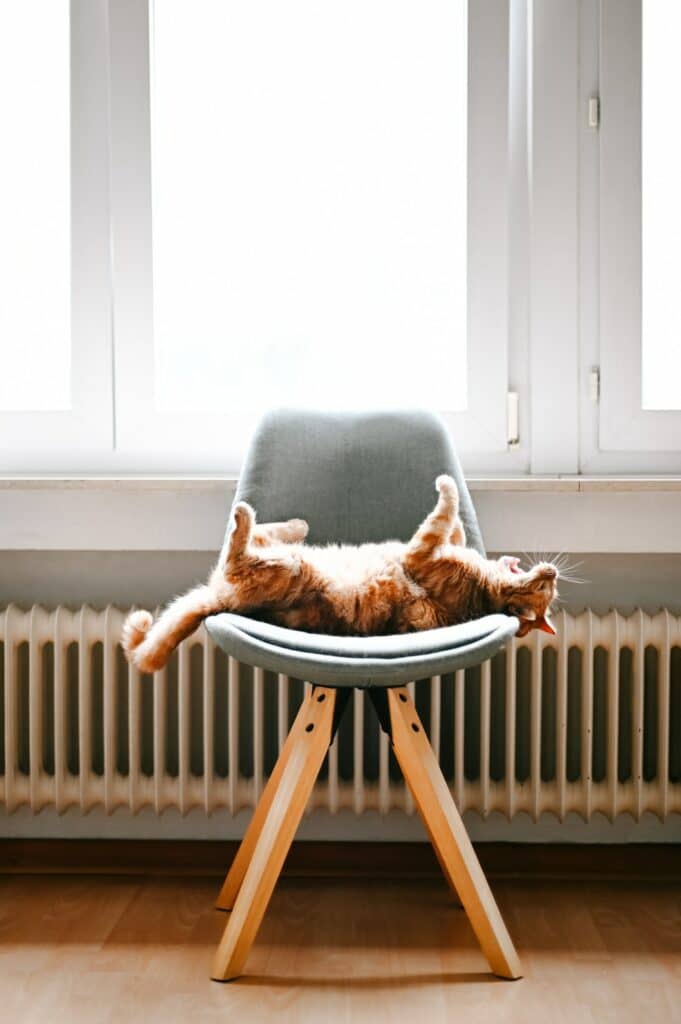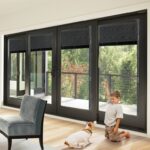Furniture Placement Around Radiators serve a great role when it comes to keeping our homes warm and toasty during those chilly winter days. But on the flip side, these handy heat exchangers can be ghastly.
Gone are the days when radiator installation advice was to set them under windows so that cold air seeping through inefficient single panes could get heat.
With double glazing and vertical radiators, heat exchanger placement is more flexible. However, certain items should never be placed in front of radiators.
Table of Contents
So Can You Put Furniture In Front of a Radiator?

Nobody recommends placing furniture in front of a radiator. However, furniture can be placed in front of a radiator with at least one foot between them. Pulling them a few inches away from the radiator lets heat rise into the space. Due to space constraints, placing heavy furniture in front of a radiator is rare.
However, leather, wood, and upholstered furniture can get damaged, and they absorb heat and may catch fire. When a radiator is placed awkwardly, a sofa or chest of drawers against it can block heat from entering the room. Close heat exposure could also damage the furnishings.
Is it Safe to Place Furniture in Front of a Radiator?
Furniture placement around radiators is crucial to creating a practical and attractive environment with a radiator. A common problem for homeowners is how to match their decor with the ugly, bulkier radiator.
The good news is that furniture can be placed one foot from the radiator safely. Decorate your home without risking fire or not getting adequate heat across the room.
We’ll explore how to safely place furniture around and in front of your radiator and some great ways to make that nasty, but necessary radiator into a tidy, functional space.
Check what you’re putting in front of the Radiator
Furniture Layout Radiators must be very careful when placing wood, leather, and upholstery furnishings. Just to be sure, you may wish to add more than one foot to the minimum suggestion. So why:
Heat may harm leather. You should avoid radiator heat because it will wear down your leather.
Having furniture in front of a radiator prevents it from distributing heat to the rest of the room, negating its purpose. Wood and upholstery furniture absorb heat, so this is especially true.
Wood and upholstered furniture absorb heat. As previously mentioned, wood furniture and anything that is upholstered will absorb all the heat coming off the radiator. While you might get a warm and toasty sofa, the rest of the room will be left blistering cold. Besides, heat can eventually ruin these materials over time.
The furniture can catch fire: Although Furniture Placement Around Radiators is not super likely, your furniture could still catch fire when placed too close directly in front of the radiator. Without a foot or so in between the radiator and the furniture, you might set yourself up for a spark in your home. You can avoid this by ensuring there’s enough space- at least one foot. The more the safer.
Can Radiators Cause Fire?

With a minimum of one foot, you can feel at ease that your family is safe, and you won’t have to worry about your house becoming too cold during winter months, due to heat being blocked by the furniture.
Electric radiators and heaters can cause fires in some cases. Water radiators will not start a fire because they may not get hot enough. However, loose materials placed close to or on a water radiator can burn and cause a fire.
According to the National Fire Protection Association, there are two main reasons why these heat exchangers could cause a fire in the home: Dirty Chimney; The unit located too close to flammable material.
To avoid radiator fires, maintain the unit and any heating system they may be attached to. If the heating units are damaged, turn them off and have a professional inspect them.
Damage to heating unit wiring could cause a short and fire. Your home’s heating system should be tested annually before winter to ensure all components are working properly.
The Bottom Line
So, to sum up, you can put furniture in front of a radiator as long as there’s at least 1 foot in between them. You might want to toss in an extra few inches to the minimum recommendations when you’re dealing with furniture made of delicate materials.
Check on your furniture regularly to make sure there are no damages. This is particularly important when it comes to leather. In regards to wood and upholstery items, you can inspect how hot they are and how well heat is being delivered throughout the room.


